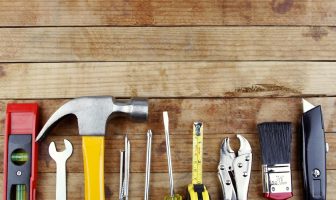 Like charity, safety should begin at home
Like charity, safety should begin at home
It may surprise you to know that more accidents happen at home than anywhere else, including on our roads. In fact every year around 6000 people in the UK die from accidents at home.
The staggering cost of accidents in the home
According to the Royal Society for the Prevention of Accidents (ROSPA), the annual cost of hospital treatment for casualties who are injured by accidents in the home (around 2.7 million people) is a staggering £45.63billion. This figure does not include the cost of people who die from their injuries, or the cost of people who seek GP treatment instead of going to hospital. So the true cost is actually even higher.
More accidents happen in the living room than anywhere else, where huge, flat screen TV’s are amongst some of the biggest culprits for injuries to children. Incredibly, in the US, falling TV’s send a child to the ER every 30 minutes.
If you are thinking sharp knives, whirring blender blades and DIY electrical wiring, then yes, the statistics are stomach churning. Yet it is often when we are just getting on with the day, taking those tiny short-cuts that speed up the mundane tasks when most accidents and injuries occur.
The reason why it is the improvised oven glove that gets you and not the hedge trimmer is because the hedge trimmer is a big, loud power tool with slashing blades and from the moment you see it sitting on the shelf in the garage you know to be very careful with it or your piano playing days may be over.
In other words, its easy to assess the risk associated with using a hedge trimmer, its obvious that it is something that has inherent risk attached to using it. Most people who use one will never suffer an injury whilst trimming their hedges because they exercise caution and don’t take risks when using it.
Crucially, its when the potential danger is less obvious that your ability to perceive risk will save the day.
Charlie says…
When it comes to grisly accidents, most of us over the age of 35 will remember the public safety information films that used to be on TV (with a mixture of warm nostalgia and terror). Whether it was Charlie, the wonky cat, warning of the perils from everything, from playing with matches to mullet-clad strangers, or the toe-curling horror of watching the boy running gleefully down the beach in bare feet, getting closer and closer to the jagged piece of broken glass that lay ahead of him, those adverts did their job.
No kid who grew up watching them ever flew a kite near power lines or played with a Frisbee anywhere near an electricity sub-station.
Learn the life skill of risk assessment
However, while those vivid depictions of dire consequences worked in scaring kids away from certain situations, they did not teach us how to actually assess risk for ourselves.
Assessing and balancing risk is a life skill, whether you are at work or about to step onto a wobbly stool to reach up to get something out of the cupboard at home.
Effective safety training at work will also improve your safety at home because good and bad safety cultures become part of you, you don’t switch them off when you clock out at the end of the day.
Our Risks, Benefits and Consequences workshop is designed to show you how to perceive and balance risk and consequences in every aspect of life in an extremely realistic and memorable way using examples from delegates own life and experiences.
Book yourself and your staff into this workshop today, it’s unique approach to understanding the principle of risk perception is the foundation stone of a good safety culture.
Speak to our Training Consultants T: 01928 515977 for further information.




